The Estuary
Extract from 136 Echo Christmas 2007
PADSTOW SEA SAND
One of the most familiar sights in the estuary these days is the red hulled ‘SAND SNIPE’ with the white wheelhouse that seems to wander rather aimlessly up and down whatever the weather. Her purpose is obvious when she is seen unloading on the dockside, the crane clanking as it scoops out the sand from its hold.
On some days at low water, tractors and diggers can be seen removing sand from the sides of the channel, so important to keep clear from the entrance to the quays. This operation is separate from the dredger but the outcome is the same. All the sand is loaded on to lorries and taken away. You may have wondered where it goes ? Apparently most of it to spread on the farmers land to enrich the soil, for our sand is rich in lime.
Owners of ‘SAND SNIPE’ are the Williams family from Hayle who have been working from Padstow for almost 20 years. They have worked other dredgers from the port, BLACK GEM, COEDMOR, and SANDIE. Before them was the SAND WYVERN owned by Mr Wyvern Batt (1970’s) and earlier the first of the suction dredgers brought to Padstow by the firm of Ashmead and Son of Bristol the BAYMEAD (FROM MID 1950’S). They were taking advantage of a long standing usage of North Cornwall Sea Sand to improve the soil conditions on inland farms. Those near the coast had long had ‘sand lanes’ to access this rich source of manure.
Such was the demand in the early 19c that a Canal was successfully built for the purpose at Bude at a great cost and not without some Victorian ingenuity. Others were envisaged and work started at Mawgan Porth to do the same for that area. However it was not completed. Padstow Old Cornwall Society were told of the traces that remain by Mrs Bill Glanville in an interesting talk entitled ‘The Two Canals’ given on Oct 3rd.
The Wadebridge to Bodmin Railway, constructed in 1834 (remember that the line to Padstow was not completed until 1899 !!) was specifically designed for the purpose of transporting sea sand brought up from Padstow in small boats and barges. It did get used for other purposes, notably with excursions to see the hangings at Bodmin Jail.
The Estuary Originally known as The Harbour
The removal of sand from beaches elsewhere in the county has ceased due to the risk of environmental damage but here the wholesale extraction over a long period seems to have made little difference. This would come as a surprise to the writers of ‘Murray’s Handbook’ of 1859 who wrote.
“The sands are thought to be now on the decrease owing to the amazing quantity which is annually taken from the Dunbar (the use of the term Doombar came later), and despatched for manure up the country. They are said to be the richest in the county in carb of lime, of which they contain 80% and are in such demand that the amount thus carried away has been estimated at no less than 100,000 tons.”
Looking for earlier references to the practice we can turn to the late 16th century when Richard Carew of Anthony published his ‘Survey of Cornwall’ and wrote.
“Then do they bring in sea sand of greater or lesser quantity, , partly after their nearness to the places from which it is fetched, and partly by the good husbandry and ability of the tiller. An ordinary horse will carry two sacks of sand and of such the borderers of the sea do bestow sixty at least in every acre, but most husbands double the number.”
There was no mistaking that these First Elizabethan farmers knew what they were doing. In this consumer age we live in it is hard to imagine those times when the “Crop” was a matter of life or starvation for the families who depended on them.
Observers of English Agriculture in Roman times noted the use of Lime Rich ‘Marl’ to improve the soil so we can safely say that the activities of David Williams and others here in Padstow have a very ancient history. And its only SAND.
Written by John Buckingham with a little help from.
David Williams of DWG Sand Co
Richard Carew – Survey of Cornwall (1969 Edition . Ed by F.E. Halliday)
Murray’s Handbook (1859) - David and Charles reprints 1971
Ask The Fellows Who Cut The Hay by George Ewart Evans pub Faber and Faber.
Ships of North Cornwall by John Bartlett pub Tabb House Padstow.
The Camel Footpath by Jack Ingrey pub Lodenek Press
Southern Branchline Special No1- Bodmin and Wadebridge- Fairclough and Wills pub Bradford Barton.
Padstow and District – by Donald Rawe & Jack Ingrey – Lodenek Press 1984
